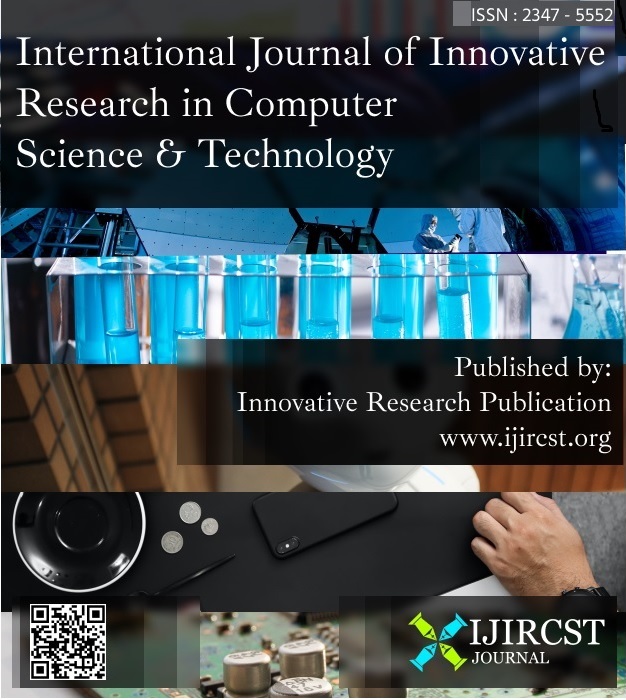Swimmer Safety Alert System for Encounters with Unidentified Marine Aquatic Animals
Keywords:
Aquatic Safety, IoT Monitoring, Swimmer Alert System, Marine Encounter, Motion Tracking Technology, Algorithmic Analysis.Abstract
The perilous encounters between swimmers and marine animals pose a significant risk to both human safety and the well-being of aquatic creatures. Every year, a distressing number of swimmers succumb to attacks by marine animals, often with neither party at fault. In response to this ongoing threat, the Swimmer Alert System emerges as a groundbreaking technology aimed at safeguarding both humans and marine life, ensuring their mutual protection without harm to either party. By utilizing advanced sensors and real-time monitoring, this system detects the presence of potentially dangerous marine animals in swimmer-populated areas, alerting both swimmers and authorities to take necessary precautions. Through proactive intervention and awareness, the Swimmer Alert System endeavors to mitigate the frequency of unfortunate incidents, fostering harmonious coexistence between humans and the marine ecosystem. As a result, lives are spared, and ecosystems remain undisturbed, offering a promising solution to a longstanding challenge.
References
J. K. Salet and B. Parekh, “Implementation of E-Governance Framework for Rural Areas of India,” in Advances in Information Communication Technology and Computing: Proceedings of AICTC 2022, Springer, 2023, pp. 341–352. Available from: https://doi.org/10.1007/978-981-19-9888-1_26
V. Pandya, “Role of E-Learning based higher education in sustainable development,” E-Commerce Futur. Trends, vol. 7, no. 2, pp. 20–23, 2023. Available from: http://dx.doi.org/10.1016/j.jclepro.2014.11.056
J. K. Salet and P. K. Gokani, “E-governance: Enhanced Learning Technology in Education Policy”. Available from: https://www.ijrte.org/wp-content/uploads/papers/v8i1C2/A11650581C219.pdf
N. Mehta and H. Thaker, “Data Collection for a Machine Learning Model to Suggest Gujarati Recipes to Cardiac Patients Using Gujarati Food and Fruit with Nutritive Values,” in International Conference on Information and Communication Technology for Intelligent Systems, Springer, 2023, pp. 271–281. Available from: https://doi.org/10.1007/978-981-99-3982-4_24
R. Perumalraja, M. Saraswathi, S. S. Priya, and R. Sweatha, “Real-Time Dangerous Marine Animals Monitoring to Alert Scuba Divers Using Computer Vision,” vol. 91, no. 4, pp. 1460–1470, 2022 Available from:. https://doi.org/10.37896/pd91.4/91495
K. R. Bairos-novak, M. C. O. Ferrari, and D. P. Chivers, “RESEARCH ARTICLE A novel alarm signal in aquatic prey?: Familiar minnows coordinate group defences against predators through chemical disturbance cues,” no. January 2018, pp. 1281–1290, 2019, Available from: https://doi.org/10.1111/1365-2656.12986
J. Luo, Y. Yang, Z. Wang, and Y. Chen, “Localization Algorithm for Underwater Sensor Network?: A Review,” no. August, 2021, Available from: https://doi.org/10.1109/JIOT.2021.3081918.
A. M. Dujon et al., “Machine learning to detect marine animals in UAV imagery?: effect of morphology , spacing , behaviour and habitat,” 2021, Available from: https://doi.org/10.1002/rse2.205.
Z. Yang et al., “UAV remote sensing applications in marine monitoring: Knowledge visualization and review,” Sci. Total Environ., vol. 838, p. 155939, 2022, Available from: https://doi.org/10.1016/J.SCITOTENV.2022.155939.
Z. Gao, Y. Zhuang, C. Chen, and Q. Wang, “Hybrid modified marine predators algorithm with teaching-learning-based optimization for global optimization and abrupt motion tracking,” Multimed. Tools Appl., vol. 82, no. 13, pp. 19793–19828, 2023, Available from: https://doi.org/10.1007/S11042-022-13819-7/METRICS.
N. Sharma, M. Saqib, P. Scully-Power, and M. Blumenstein, “SharkSpotter: Shark Detection with Drones for Human Safety and Environmental Protection,” Humanit. Driven AI, pp. 223–237, 2022, Available from: https://doi.org/10.1007/978-3-030-72188-6_11.
D. P. McPhee, C. Blount, M. P. Lincoln Smith, and V. M. Peddemors, “A comparison of alternative systems to catch and kill for mitigating unprovoked shark bite on bathers or surfers at ocean beaches,” Ocean Coast. Manag., vol. 201, p. 105492, 2021, Available from: https://doi.org/10.1016/j.ocecoaman.2020.105492
X. Li, H. Huang, and A. V Savkin, “A Novel Method for Protecting Swimmers and Surfers from Shark Attacks using Communicating Autonomous Drones,” pp. 1–11. Available from: https://doi.org/10.1109/JIOT.2020.2987997
C.- Nd, “Marine Predators Algorithm?: A Nature-inspired Metaheuristic,” pp. 0–43, 2020. Available from: https://doi.org/10.1016/j.eswa.2020.113377
C. A. Gallagher, M. Chimienti, J. Nabe-, and C. A. Gallagher, “mediated responses to changing prey size and distribution in marine top predator movements and population dynamics,” no. October 2021, pp. 241–254, 2022, Available from: https://doi.org/10.1111/1365-2656.13627.
Y. P. Papastamatiou et al., “Sharks surf the slope?: Current updrafts reduce energy expenditure for aggregating marine predators,” no. January, pp. 2302–2314, 2021, Available from: https://doi.org/10.1111/1365-2656.13536
A. M. Helmi, M. A. A. Al-qaness, A. Dahou, and M. Abd Elaziz, “Human activity recognition using marine predators algorithm with deep learning,” Futur. Gener. Comput. Syst., vol. 142, pp. 340–350, 2023, Available from: https://doi.org/10.1016/j.future.2023.01.006
S. J. Kanjibhai and D. P. K. Gokani, “Effective Role of E-governance in Higher Education,” NOLEGEIN-Journal Corp. Bus. Laws, vol. 3, no. 1, pp. 1–6, Jul. 2020, Accessed: Mar. 14, 2024. Available from: https://doi.org/10.9790/7388-04215762
N. Mehta, “Fuzzy Logic Driven Nutrition-based Recommendation System for Gujarati Cardiac Patients: Integrating Cultural Preferences and Patient Feedback,” J. Comput. Technol. Appl., vol. 15, no. 1, pp. 59-83p, 2024. Available from: https://doi.org/10.37591/JOCTA.v15i01.0




